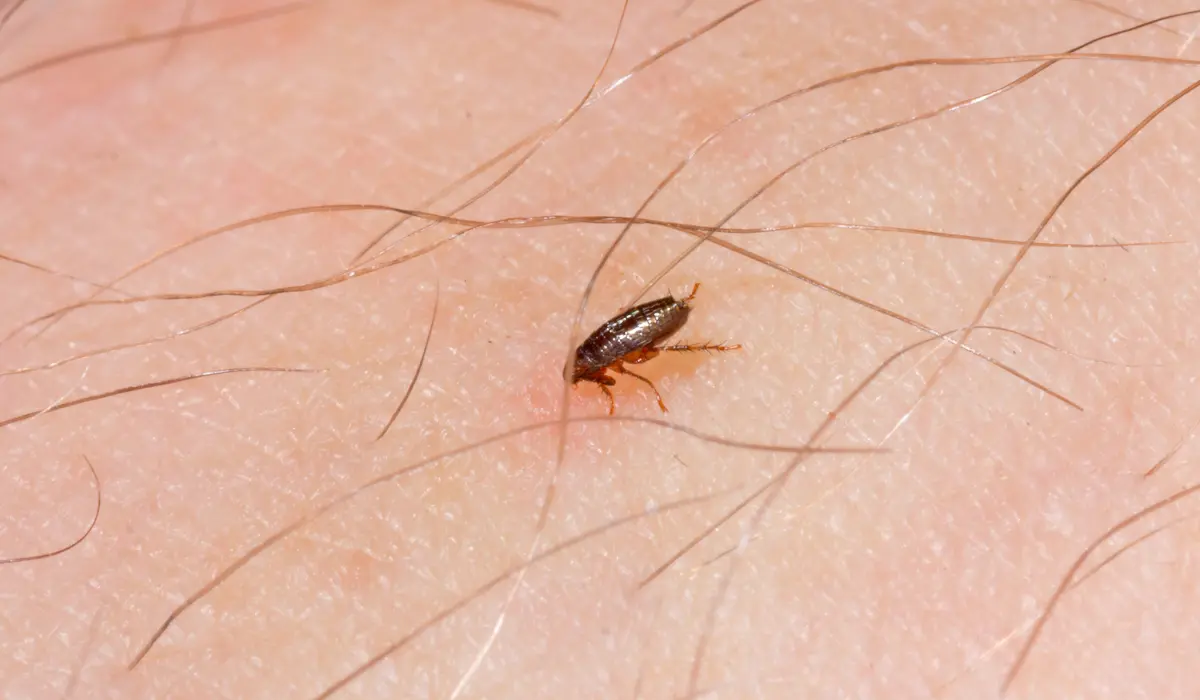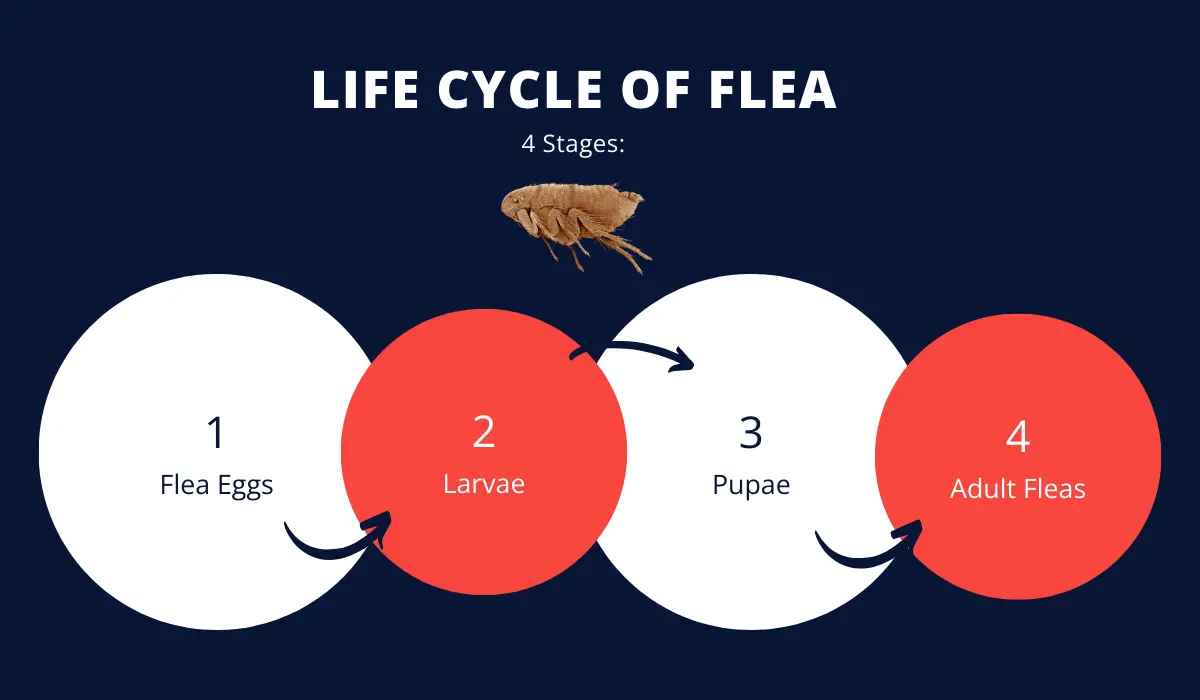
Dealing with fleas in Louisiana? You’re not alone. These tiny pests not only irritate humans and pets but can also lead to serious health issues if left unchecked.
Flea infestations spread quickly, and one female flea can lay up to 50 eggs a day. So, effective control is crucial, especially for pet owners.
Keep reading to learn the best strategies to protect your home and furry friends from these unwelcome guests.
Key Takeaways
- Fleas in Louisiana can thrive nearly year-round due to the mild climate, making consistent prevention and treatment essential.
- Pets and humans can face significant health risks from flea infestations, including diseases and allergic reactions.
- Identifying signs of fleas early in both pets and homes is crucial to prevent widespread infestation and health issues.
- A combination of treatments, including veterinary-prescribed medications and over-the-counter products, is recommended for effective flea management.
- Professional pest control services can provide thorough indoor and outdoor treatment options for severe infestations.
WHAT TO KNOW ABOUT FLEAS IN LOUISIANA
In Louisiana, where the climate can significantly influence flea populations, it’s essential to recognize these pests’ distinct characteristics and behaviors, particularly in cities like Metairie.
Understanding the physical traits of fleas is crucial, especially since Louisiana is home to species like the cat flea. Here are some features to identify them:
- Size: Typically 1/16 to 1/8 inch long
- Color: Dark reddish-brown
- Anatomy: Thin, flat body and strong legs for jumping
Life Cycle and Habitat

Recognizing the flea life cycle aids in effective pest control. Here are the stages and their usual habitats in Louisiana:
| Life Cycle Stages | Habitat |
| Flea Eggs | Indoors in carpets, pet bedding |
| Larvae | Hidden in dark, humid areas |
| Pupae | In protected environments |
| Adult Fleas | On hosts or in tall grass |
Seasonal Activity
Flea activity in Louisiana changes with the seasons. Even the state’s mild winters allow for nearly year-round flea issues.
Here’s what a typical flea season looks like:
- Spring: A surge in flea activity as temperatures rise
- Summer: Peak season, especially in tall grass and shaded areas
- Fall: Activity continues as fleas seek warm hosts
- Winter: Even with cooler temperatures, fleas remain active indoors
HEALTH RISKS ASSOCIATED WITH FLEAS
Pets are at risk of various diseases and allergies caused by flea infestations. Some of the most severe health complications from flea bites include:
| Health Complications | Description |
| Flea Allergy Dermatitis | An allergic reaction causing itching and irritation |
| Anemia | A decrease in red blood cells due to excessive blood loss |
| Tapeworms | Intestinal parasites that pets acquire from ingesting fleas |
| Bartonellosis | A bacterial infection also known as “cat scratch disease” |
Humans can also suffer from flea bites and diseases transmitted by fleas. In places where wildlife like raccoons are common, flea control is crucial, as they can carry fleas that transmit diseases like typhus. Symptoms include:
- Itchy red bumps
- Fever
- Headaches
- Body aches
- Rash
COMMON SIGNS OF FLEA INFESTATIONS
Signs in Pets
Quickly identifying the signs of a flea infestation on pets is essential to prevent discomfort and potential health issues. Common symptoms include:
- Scratching: An increase in scratching behavior is often the most noticeable sign.
- Biting: Pets may bite their skin frequently, especially around the tail, back, or hindquarters.
- Hair Loss: Patches of hair loss can indicate a flea problem, particularly if accompanied by other signs.
- Flea Dirt: Small black specks on the pet’s skin or fur, resembling ground pepper, reveal the presence of flea dirt.
Signs in Home
As homeowners, you should be just as vigilant inside the home for indicators of a flea infestation. Here’s a simple checklist:
- Check Pet Bedding: Fleas often reside in the areas where pets sleep and relax.
- Vacuum Bag Inspection: Evidence of fleas can be found inside the vacuum bag after cleaning pet areas.
- Flea Dirt on Furniture: Fine, black specks on furniture or carpets can signify flea activity.
- Presence of Fleas: Spotting small, dark insects hopping on carpets, furniture, or other surfaces is a clear sign.
TREATMENT AND PREVENTION OF FLEAS
Successful flea management involves a combination of treatments to combat these persistent pests.
Veterinary Solutions
Veterinarians often recommend pharmaceutical solutions because they are generally considered effective and tailored to a pet’s specific needs.
Here are various vet-prescribed flea prevention and treatments:
| Treatment Types | Effectiveness |
| Oral Medications | Kills fleas and sometimes ticks |
| Topical Applications | Prevents and treats flea infestations |
| Flea Collars | Offers prolonged flea and tick prevention |
Over-The-Counter Options
Pet stores and pharmacies in Louisiana stock a range of flea treatment products. Here’s what’s out there:
- Spot-on Treatments: Single-dose liquids applied to the back of the neck
- Flea Shampoos: Designed to wash away fleas during regular pet bathing
- Flea Sprays: Can be used directly on pets and their environment
- Flea Powders: Dust onto the pet’s fur and rub into the coat
Home Remedies
Many pet owners opt for natural methods to keep their pets flea-free. Here is a table of common home remedy ingredients and their usage:
| Ingredients | Method |
| Diatomaceous Earth | Sprinkle on carpet and pet bedding |
| Apple Cider Vinegar | Add to pet’s drinking water or spray on fur |
| Lemon Spray | Spray diluted lemon juice on the pet’s coat |
Regular Maintenance
Maintaining a flea-free environment takes diligence. As pet owners, you can follow this guide to keep your homes and pets in top condition:
- Check pets for fleas during grooming.
- Vacuum high-traffic areas where pets spend time.
- Wash pet bedding in hot water.
- Clean and vacuum furniture.
- Treat pets with preventative flea medication.
- Inspect the yard for areas that might harbor fleas.
PROFESSIONAL FLEA CONTROL SOLUTIONS
Professional pest control services offer comprehensive solutions when tackling a severe flea infestation in Louisiana.
At LaJaunie’s Pest Control, our approach is systemic. We eradicate fleas by treating both indoor and outdoor environments.
Here’s an overview of what our trained exterminators do:
| Steps | Description |
| Initial Contact | Our technicians assess indoor, outdoor, or both through initial client communication. |
| Inspection | A detailed inspection identifies high-activity zones. |
| Outdoor Treatment | Outdoor fogging covers up to half an acre with Bifen and Crosscheck granules; additional areas cost extra. |
| Indoor Treatment | Indoor treatment targets baseboards, cracks, and crevices using Tekko and Tandem sprays. |
| Usage of Aerosols | Aerosols such as PT Flea and Bed Bug or Ultracide/PreCore 2000 are applied to floors and pet areas. |
| Follow-Up | A complimentary follow-up service after two weeks addresses any residual flea activity. |
IS IT TIME TO CALL THE EXPERTS?
If you notice your pet scratching incessantly, it may be more than an itch. Unrelentless fleas in the house can quickly escalate from a mild annoyance to a full-scale infestation.
So, contact pest control experts sooner rather than later to restore peace to the household.
Whether you’re in Baton Rouge or New Orleans, seeking expert help should be easy. For immediate intervention for a severe infestation, let Lajaunie’s flea control specialists tailor a solution that’s right for your home.
For more information about the areas we service, visit our location page.
Related: 5 Unexpected Things Attracting Fleas to Your Yard
Related: How to Get Rid of Fleas in Your Car